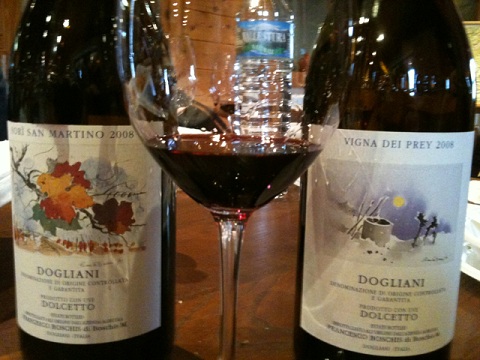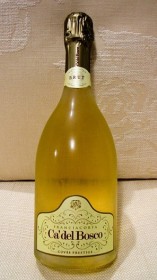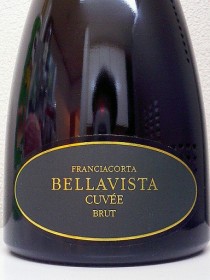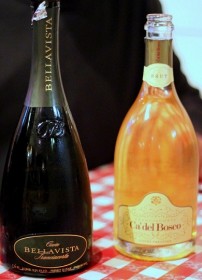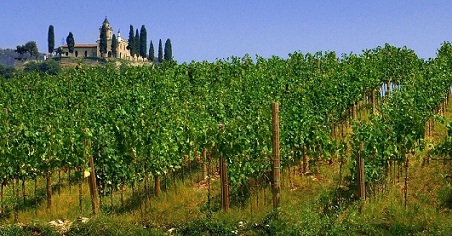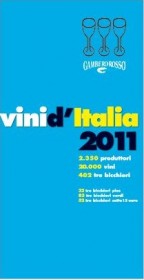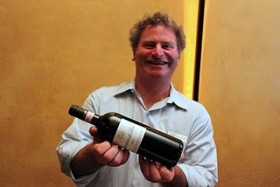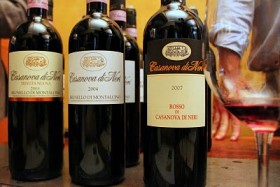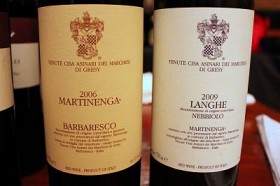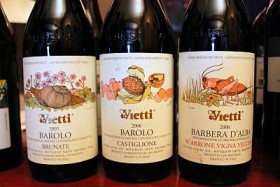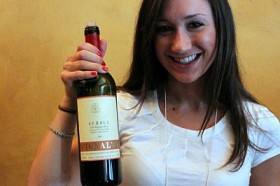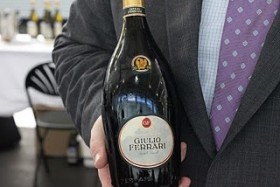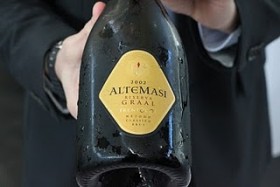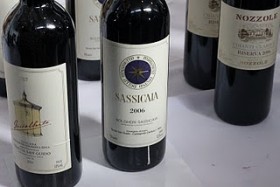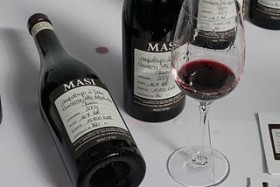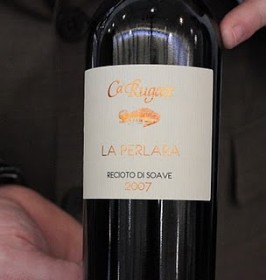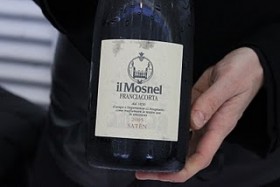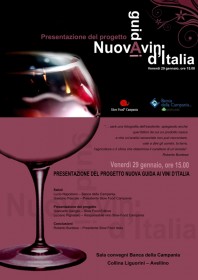Thu 6 Jan 2011
Dolcetto di Dogliani – Vini DOC Italian
Posted by Megan under Best Italian wines, Langhe, Wine guides, Winemakers
1 Comment
Dolcetto is a black wine grape variety widely grown in the Piedmont region of northwest Italy. The Italian word dolcetto means “little sweet one”, but it is not certain that the name originally carried any reference to the grape’s sugar levels: it is possible that it derives from the name of the hills where the vine is cultivated. In any case the wines produced are nearly always dry. They can be tannic and fruity with moderate, or decidedly low, levels of acidity and are typically meant to be consumed one to two years after release.
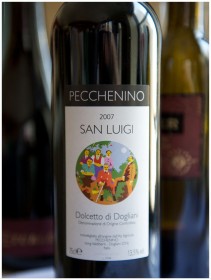 Dolcetto wines are known for black cherry and licorice flavours with some prunes and a characteristically bitter finish reminiscent of almonds. While the name implies sweetness, the wines are normally dry. The tannic nature of the grape contributes to a characteristic bitter finish.
Dolcetto wines are known for black cherry and licorice flavours with some prunes and a characteristically bitter finish reminiscent of almonds. While the name implies sweetness, the wines are normally dry. The tannic nature of the grape contributes to a characteristic bitter finish.
Recently our friend Diana, who runs the great B&B Baur in Aqui Terme, about an hour away from TorreBarolo, visited the town of Dogliani and these are her thoughts:
“A few weeks before Christmas my husband had the idea to take a ride over to the Langhe to taste some wines. He had a specific goal: he wanted to go to the Bottega del Dolcetto di Dogliani, the regional enoteca that is snuggled below the Municipio, right next to the splendid Chiesa dei Santi Quirico e Paolo in the heart of the city.
We had been to the enoteca before; it was from there that we visited the wonderful Chionetti winery for the first time in 2005. Dogliani was actually the center of our property search in 2001 and 2002 before we discovered our hill in the Monferrato. Contructed in the 12th century, Dogliani lies at the basin of the Barolo Valley. The nutrients and minerals that help the Nebbiolo grapes to flourish wash down to provide the perfect conditions for growing the Dolcetto grape. Of the eight zones officially designated to produce Dolcetto DOC, Dogliani is one of the top two. In 2005, Dolcetto Superiore di Dogliani received its DOCG status. With a minimum of 12.5% alcohol content and a hint of oak (the level depending on the winery) aging, Docetto has moved from a sharp, high tannin, low acid, quick-to-table wine with a slightly bitter residual flavor to a more rounded, softer wine that can sit in the bottle a few more years before being enjoyed with a variety of dishes typical to the region.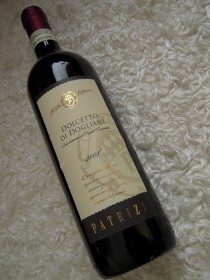
Enzo Romano, who runs the bottega, greeted us and helped Micha find the selection of wines he had been searching for. The Enoteca Regionale in Dogliani is one of the most organized and best run enoteche in the system. It has a current selection of all the producers in the appellation and a good breath of different vintages as well. Enzo helped Micha put together a healthy selection of twelve bottles of Dolcetto, both regular and superiore (wooded), for us to try. After trying, we notate the bottles we like the best and make appointments to visit those wineries.
An ideal combination of classic Piemontese food and wine might be. brodo broth made from winter capon served with boiled vegetables and agnolotti Piemontesi, alongside a 2008 Dogliani Bricco DOCG from the Cascina Minella, a vineyard brought to new life in 2002 by Livia and Gianluca Marchisio. I love this wine. It’s everything a good Dolcetto should be. It has character and bite without being agressive. Its 14% alcohol content and fullness of flavor speak of the patience and timing that the Marchisios exercised in picking the correct moment to harvest.
Dolcetto is not an easy wine to get right. We’ve been experimenting with the wine (from the tasting perspective) for years. To find dolcetto that truly maximizes the grape’s potential requires a producer with excellent soil conditions, the willingness to dedicate precious, southern exposure territory to a relatively humble wine, a sixth sense of timing regarding the harvest, the ability to stave off the many diseases this grape can contract and strong cellar knowlege. In our opinion, the two regions that have a concentration of these types of Dolcetto wineries are most likely to be found in Dogliani and Diano d’Alba.
Of course, there is tremendous enjoyment attached to searching out really spectacular wines from the bunch. Especially when that search takes you through some of the most bucolic and historic growing regions in Italy. We look forward to sharing our thoughts on the wines we’ve bought as we try them.”
